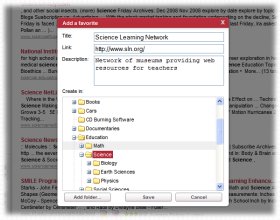|
Education
Web
Viewing 1-5 of 5 total results
• 7.3.spi.13. recognize the definitions of modifications on the physical environment (i.e. global warming, deforestation, desert, urbanization). • 7.3.spi.14. distinguish between types of maps. (i.e. political, physical, climatic, land-use resource, contour, elevation, top...
1
0
• 7.3.spi.13. recognize the definitions of modifications on the physical environment (i.e. global warming, deforestation, desert, urbanization). • 7.3.spi.14. distinguish between types of maps. (i.e. political, physical, climatic, land-use resource, contour, elevation, topographic.) • 7.3.spi.15 interpret a map indicating scale, distance and direction. • 7.3.spi.16. demonstrate understanding of characteristics and implications of a diverse global culture. At Level 3, the student is able to • 7.3
9
0
http://www.state.tn.us/education/ci/ss/doc/SS_Grade_7.pdf#page=9
www.state.tn.us/education/ci/ss/doc/SS_Grade_7.pdf#page=9
• 7.3.spi.13. recognize the definitions of modifications on the physical environment (i.e. global warming, deforestation, desert, urbanization). • 7.3.spi.14. distinguish between types of <span class="highlight">maps</span>. (i.e. political, physical, climatic, land-use resource, <span class="highlight">contour</span>, elevation, <span class="highlight">topographic</span>.) • 7.3.spi.15 interpret a map indicating scale, distance and direction. • 7.3.spi.16. demonstrate understanding of characteristics and implications of a diverse global culture. At Level 3, the student is able to • 7.3
interpret geographic information by selecting appropriate maps, map projections, and other representations, i.e., urban planning, national parks. G5.[9-12].3 Apply concepts and models of spatial organization and use quantitative methods to identify and make decisions about geo- graphic inf...
1
0
interpret geographic information by selecting appropriate maps, map projections, and other representations, i.e., urban planning, national parks. G5.[9-12].3 Apply concepts and models of spatial organization and use quantitative methods to identify and make decisions about geo- graphic information. G5.[9-12].4 Analyze a variety of complex maps, i.e., topographic, demographic, and land use, to acquire geographic information. Ma p S ele ct ion & Ana lysi s G5.[6-8].4 Construct mental maps from
36
0
http://www.doe.nv.gov/Standards/SocialStudies/CompleteStandardsDec2008.pdf#page=36
www.doe.nv.gov/Standards/SocialStudies/CompleteStandardsDec2008.pdf#page=...
interpret geographic information by selecting appropriate <span class="highlight">maps</span>, map projections, and other representations, i.e., urban planning, national parks. G5.[9-12].3 Apply concepts and models of spatial organization and use quantitative methods to identify and make decisions about geo- graphic information. G5.[9-12].4 Analyze a variety of complex <span class="highlight">maps</span>, i.e., <span class="highlight">topographic</span>, demographic, and land use, to acquire geographic information. Ma p S ele ct ion & Ana lysi s G5.[6-8].4 Construct mental <span class="highlight">maps</span> from
environment affects humans and how humans modify their physical environment. 3. Analyze the physical characteristics of historical places in various regions and the role they played (e.g., Jamestown for the English, St. Augustine for the Spanish, New Orleans for the French, and...
1
0
environment affects humans and how humans modify their physical environment. 3. Analyze the physical characteristics of historical places in various regions and the role they played (e.g., Jamestown for the English, St. Augustine for the Spanish, New Orleans for the French, and the Cherokee lands in the Carolinas and Georgia) by using a variety of visual materials and data sources at different scales (e.g., photographs, satellite and shuttle images, pictures, tables, charts, topographic and historical maps
13
0
http://sde.state.ok.us/Curriculum/PASS/Subject/socstud.pdf#page=13
sde.state.ok.us/Curriculum/PASS/Subject/socstud.pdf#page=13
environment affects humans and how humans modify their physical environment. 3. Analyze the physical characteristics of historical places in various regions and the role they played (e.g., Jamestown <span class="highlight">for</span> the English, St. Augustine <span class="highlight">for</span> the Spanish, New Orleans <span class="highlight">for</span> the French, and the Cherokee lands in the Carolinas and Georgia) by using a variety of visual materials and data sources at different scales (e.g., photographs, satellite and shuttle images, pictures, tables, charts, <span class="highlight">topographic</span> and historical <span class="highlight">maps</span>
Earth causes earthquakes and volcanic eruptions; • describe the formation and movement of glaciers; • use maps (e.g., topographic, hydrographic, highway) to identify land features and their locations; (continued) K-12 PERFORMANCE STANDARDS Educational experiences in Grades 9-...
1
0
Earth causes earthquakes and volcanic eruptions; • describe the formation and movement of glaciers; • use maps (e.g., topographic, hydrographic, highway) to identify land features and their locations; (continued) K-12 PERFORMANCE STANDARDS Educational experiences in Grades 9- 12 will assure that students: • illustrate how the formation, weathering, sedimentation and reformation of rock constitute a continuing “rock cycle;” • explain that the lithosphere consists of separate plates that ride
44
0
http://www.sde.ct.gov/sde/lib/sde/PDF/DEPS/Career/STC/contents_standards.pdf#page=44
www.sde.ct.gov/sde/lib/sde/PDF/DEPS/Career/STC/contents_standards.pdf#pag...
Earth causes earthquakes and volcanic eruptions; • describe the formation and movement of glaciers; • use <span class="highlight">maps</span> (e.g., <span class="highlight">topographic</span>, hydrographic, highway) to identify land features and their locations; (continued) K-12 PERFORMANCE STANDARDS Educational experiences in Grades 9- 12 will assure that students: • illustrate how the formation, weathering, sedimentation and reformation of rock constitute a continuing “rock cycle;” • explain that the lithosphere consists of separate plates that ride
45
0
http://www.sde.ct.gov/sde/lib/sde/PDF/DEPS/Career/STC/contents_standards.pdf#page=45
www.sde.ct.gov/sde/lib/sde/PDF/DEPS/Career/STC/contents_standards.pdf#pag...
more pollution than others. • use <span class="highlight">maps</span> (e.g., <span class="highlight">topographic</span>, hydrographic, highway) to identify land features and their locations; • recognize that some changes in the Earth’s surface, such as earthquakes and volcanic eruptions, are abrupt, while other changes happen very slowly (e.g., uplift and wearing down of mountains); and • explain how human activities (such as reducing the amount of forest cover, increasing the amount and variety of chemicals released into the atmosphere, and waste
Social Studies Performance Standard A Grade 8
physical, and topographic maps, a globe, aerial photographs, and satellite images, to gather and compare information about a place A.8.2 Construct mental maps of selected locales, regions, states, and countries and draw maps from memory, representing relative location, di...
|
